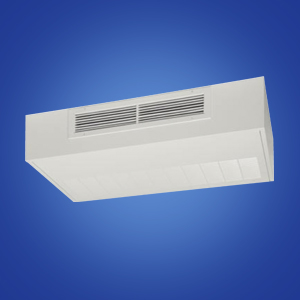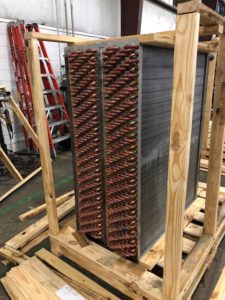Lots of companies in the HVAC business attempt to keep their products as complicated as possible in order to lend a certain “mystery” to the industry, which has never made sense to us at Capital Coil. We have all been in this information age for quite some time with more information/data available to more people than ever before. We feel that by removing some of the “secrecies” surrounding fan/coil units, our customers will be able to better understand the products as we do.
Most of our potential customers know Capital Coil strictly for our HVAC coils, which makes sense because the word “coil” is in our company’s name. But some people may not be aware that we do in fact offer multiple fan/coil models with various quick-ship options, or that fan/coils comprise a significant portion of Capital Coil’s overall business.
With that said – what are fan/coil units (FCU’s) exactly?
- Fan/coils are easy to understand when you remove a lot of the complex terminology. Our definition of a FCU unit is one that is direct drive and not belt driven…easy enough to understand, right? There is a fan, a coil, and sometimes a filter. Capital Coil offers numerous model types, but the only thing that really differentiates the various models from each other is the casing on the outside of the unit. And the casing is typically based on how and where you want to install the unit.
- The fan is directly mounted on the motor, and the maximum CFM that can be used in these units is typically 1,200 FT/min. However, Capital Coil does offer some units that can have a CFM as high as 3,000 FT/min, or (7.5) tons.
- FCU’s can be divided into two groups based on airflow – Horizontal and Vertical. Think of fan/coils installed in a hotel or classroom. These are typically vertical units because the air goes from the bottom of the unit to the top discharge airflow. Horizontal units have horizontal airflow with inlet and discharge both horizontal as well.
- As mentioned, fan/coil casings are determined based on how and where you want to install the unit. But figuring that out involves asking some additional questions, such as is the unit hidden above the ceiling or is it exposed? Is the unit horizontal or vertical? Does the unit need a filter?
- Like most any product, there are several “packages” that you can select, such as certain valves, that will make the unit more expensive and complex. But once you strip away the complex terminology and are able to understand the basic design and concept of FCU’s, they are pretty easy to work with.
Now you know that Capital Coil is very much in the fan/coil business, and when you are looking for something fast, Capital Coil should be your first call or email!

